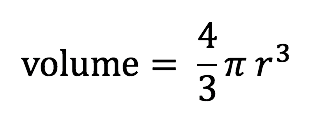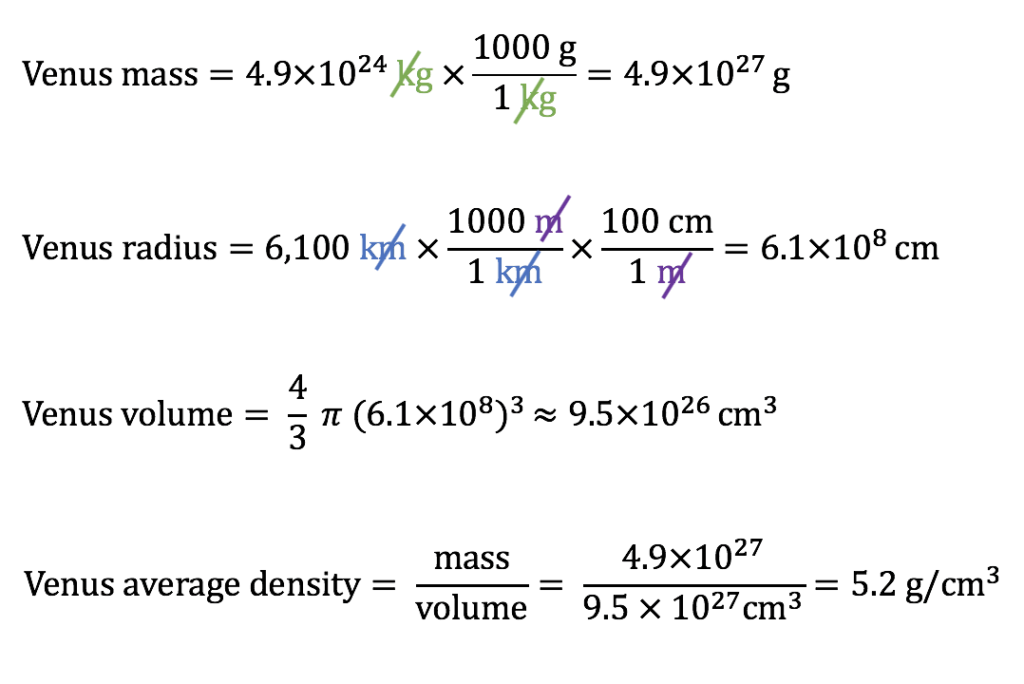Earth’s Average Density
Earth’s radius is approximately 6,400 kilometers, and its mass is about 6×1024 kilograms. Suppose we want to calculate Earth’s average density in units of grams per cubic centimeter. How can we do it?
Step 1 – Understand the problem.
We know that density has units of mass divided by volume. For Earth, this means we need to divide our planet’s mass by its volume. This should be easy in principle, except that we were given Earth’s mass and radius, but not its volume. So our first step in calculating will be to figure out Earth’s volume from its radius; we can do this by using the formula for the volume of a sphere:

We also face a second problem: We were given the mass in kilograms and the radius in kilometers, but we are asked for density in grams per cubic centimeter. Therefore, before we calculate, we’ll want to convert the given value for mass from kilograms to grams and the given value for radius from kilometers to centimeters.
Step 2 – Solve the problem.
Let’s start with the unit conversions. For mass, we simply use the fact that there are 1,000 grams in 1 kilogram to convert Earth’s mass from kilograms to grams:

For the radius, we use two facts: There are 1,000 meters in 1 meter and 100 centimeters in 1 meter. Therefore:

Now we can use the volume formula to calculate Earth’s volume from its radius:

Finally, we divide the mass by the volume to get the average density:

Step 3 – Explain your result.
We have found that Earth’s average density is about 5.5 g/cm3, which means it is about 5.5 times as dense as liquid water.
Check Your Skills
The planet Venus has a radius or approximately 6,100 kilometers and a mass of about 4.9×1024 kilograms. Calculate Venus’s average density in units of grams per cubic centimeter. How does Venus’s average density compare to Earth’s?
The calculations are as follows:

Notice that Venus’s average density is very similar to Earth’s. This fact, along with our general understanding of the solar system, tells us that Venus must have an overall composition that is very similar to Earth’s. Note that we will make use of this result in Chapter 7, when we will ask students to recognize that that Venus and Earth are almost “identical twin” planets except for their huge difference in surface temperature.